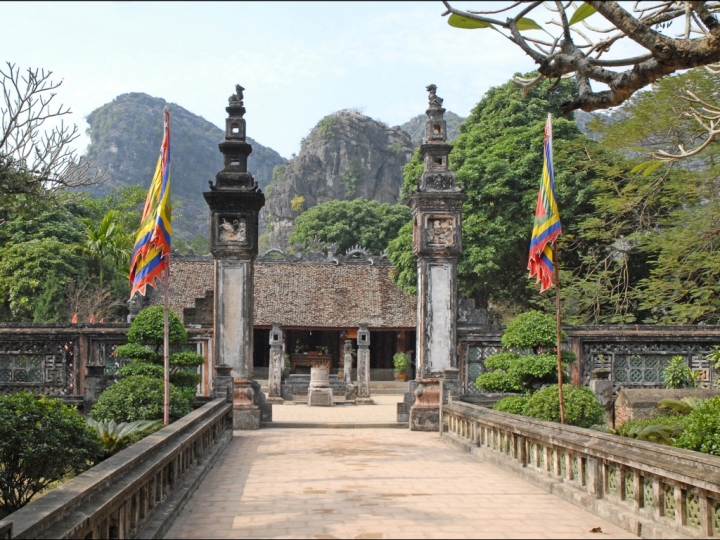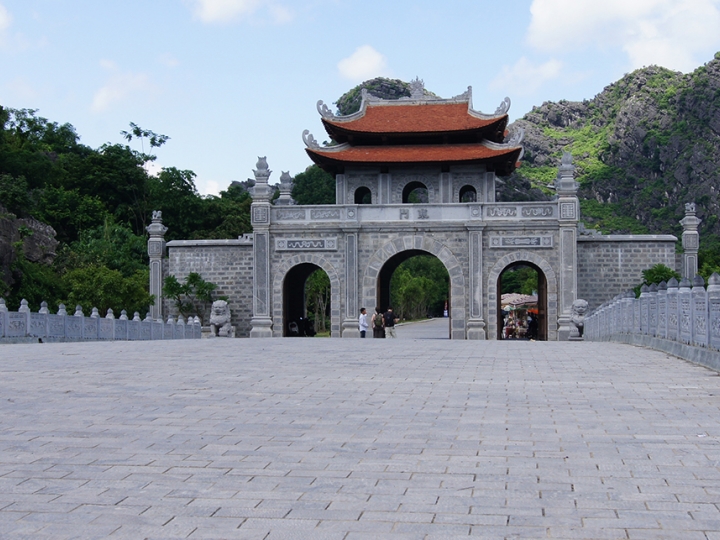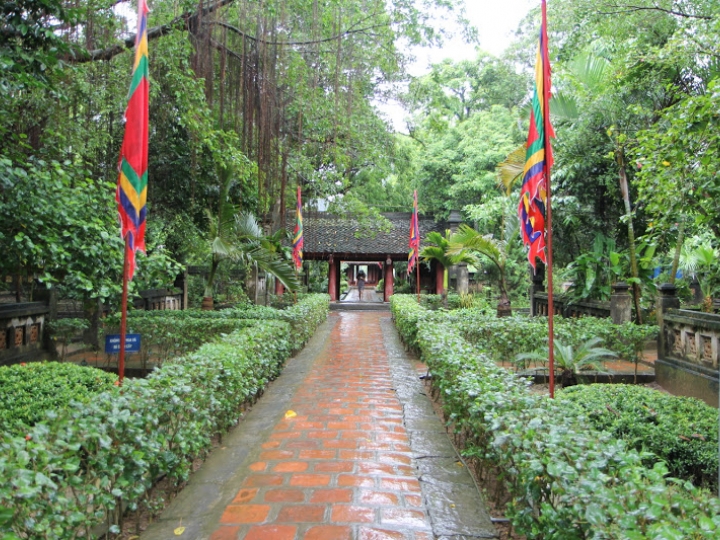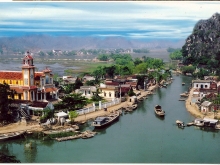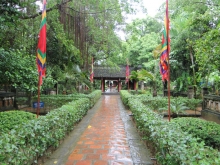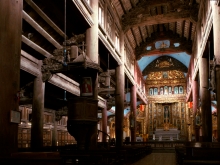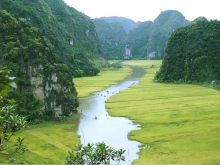Hoa Lu Ancient Capital
Hoa Lu was the capital of Vietnam in the 10th and 11th centuries. It lies in Truong Yen Thuong village, Truong Yen Commune, Hoa Lu District, Ninh Binh Province, Vietnam.
In the late 10th century, Hoa Lu was the capital as well as the economic, political and cultural center of Dai Co Viet, an independent Vietnamese polity founded in 968 A.D. by the local warlord Dinh Bo Linh (posthumously known as Dinh Tien Hoang, or "First Dinh Emperor"), following years of civil war and a violent secessionist movement against China's Southern Han Dynasty. Hoa Lu was the native land of the first two imperial dynasties of Vietnam: the Dinh founded by Dinh Tien Hoang, and the Early Le founded by Le Dại Hanh. Following the demise of the Le Dynasty, in 1010 Ly Cong Uan, the founder of the Ly Dynasty, transferred the capital to Thang Long (now Hanoi), and Hoa Lu became known as the "ancient capital.
The capital at Hoa Lu covered an area of 300 ha (3.0 km2), including both the Inner and Outer Citadels. It included defensive earthen walls, palaces, temples and shrines, and was surrounded and protected by mountains of limestone. Today, the ancient citadel no longer exists, and few vestiges of the 10th century remain. Visitors can see temples built in honor of the emperors Dinh Tien Hoàng and Le Dại Hanh, their sons, and Queen Duong Van Nga, who was married first to Dinh Tien Hoang and then to Le Dại Hanh. The tomb of Dinh Tien Hoang is located on nearby Ma Yen mountain, while the tomb of Le Dại Hanh lies at the foot of the mountain.

